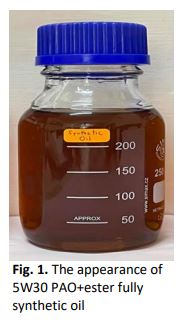Investigation of Tribological Properties of Graphene Nanoplatelets in Synthetic Oil
DOI:
https://doi.org/10.37934/arfmts.96.1.115126Keywords:
Graphene, lubricating oil, nanolubricants, friction and wearAbstract
Lubricants are commonly utilized in industry to minimize friction and wear for tools and components, and additives play indispensable roles in lubricants to attain overall enhanced tribological properties. Because of environmental concerns, the introduction of nanoparticles is regarded as a promising lubricant additive capable of replacing conventional additives and improving lubricant tribological properties. This study investigated the tribological behaviour of 5W30 PAO+ester fully synthetic oil (SO) with and without the addition of graphene nanoplatelets. Besides, this study also focuses on the tribological effect of graphene's concentration (0.01, 0.02, 0.05, 0.1 and 0.2 wt%). The experiments were conducted using a four-ball tester according to ASTM D4172 and surface analysis was done on the worn surfaces using scanning electron microscopy and energy-dispersive x-ray spectroscopy. The results show that the presence of graphene significantly improves the tribological properties. SO enriched 0.05 wt% graphene exhibits the lowest coefficient of friction and wear scar diameter, and the friction and wear were reduced by 33.78% and 34.42%, respectively. The protective film formed on the worn surface is responsible for friction and wear reduction. In addition, the worn surface becomes smoother after being lubricated by nanolubricants, which can be observed through the SEM analysis. EDX analysis revealed the presence of element carbon on the worn surface, implying that nanoparticles had deposited on the worn surface.
Downloads
































